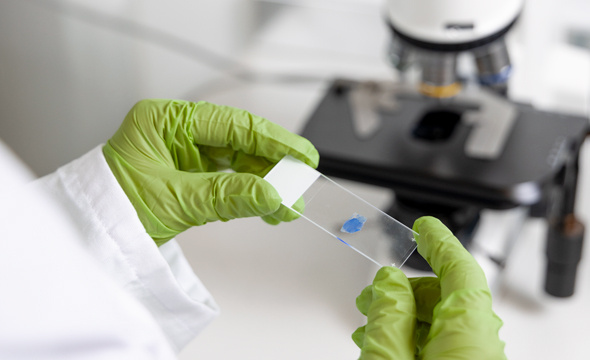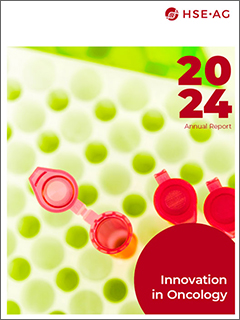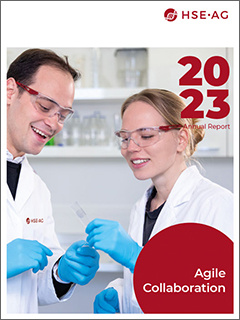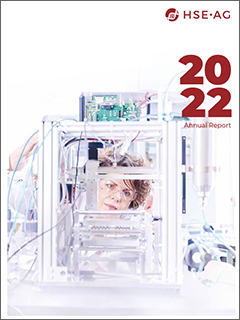
For diagnostics, automation is fundamental
As a former Roche Diagnostics senior executive, Ann Costello has witnessed the enormous progress in cancer diagnostics over the course of her 30+-year career. For her, the key success factors in diagnostic device development are clearly defined customer requirements, open communication and collaboration between all partners as well as customer involvement throughout the entire development process.
As they need to master new skills such as Artificial Intelligence and Machine Learning, diagnostics companies must create interdisciplinary product development teams to remain competitive and innovative.

How has the importance of diagnostics in oncology changed in recent years?
The role of diagnostics in oncology and patient care has always been important. Accurate diagnosis is a prerequisite for successful treatment. But over the course of my career, the field of oncology has undergone a huge transformation. In particular in the area of genetic sequencing capabilities, completely new possibilities have opened up.
Thanks to Next-Generation Sequencing (NGS), we can now identify genetic alterations in individual cancer tissues and develop personalized therapies. The synergy between scientific and technological advances in diagnostics has been instrumental in the significant increase in survival rates of cancer patients.
What are the current trends in cancer diagnostics?
NGS technologies are becoming increasingly precise and cost-effective. For example, a few years ago there were only three or four markers for lung cancer, but now there are more than 20 and researchers continue to discover novel genetic alterations that contribute to the disease. This is great news for patients because depending on the genetic profile of their tumor their oncologist can tailor their therapy.
Another exciting area is the evolution of liquid biopsies. They may become an important alternative to the often painful and risky removal of tissue samples to diagnose cancer. Liquid biopsy uses Next-Generation Sequencing (NGS) to detect minute amounts of altered DNA sequences in the blood, derived from dying cancer cells. The technology is already being used to monitor treatment. In the future, it may also be used for cancer screening. However, specificity and sensitivity still need to be improved.
Automation ensures consistent and reproducible results, reduces human error, and improves accuracy in cancer diagnostics.
And histology, which has long been the number one diagnostic tool in oncology, will it disappear?
Personally, I don’t believe histology will disappear as the primary diagnostic tool in oncology. Pathologists will continue to rely on the ability to visually examine cancerous tissue directly. In addition, histology itself is evolving. Automation has made a huge impact on the turnaround time of results and more importantly on the accuracy of the result for the patient. In addition, histology, like many other fields, is becoming increasingly digitized. For example, Digital Pathology which uses whole-slide imaging (WSI) of histology slides to analyze samples on a computer screen and AI-based (Artificial Intelligence) algorithms to assist in the identification of cancerous regions, the evaluation of tumor features and the grading of cancer. AI has the potential to augment the diagnostic capabilities of pathologists to further improve accuracy and consistency in cancer diagnosis.
You mention automation. How important is it to modern cancer diagnostics?
Automation is fundamental. Historically, cancer diagnostics techniques were largely manual. Processing tissue samples, running assays, and conducting genomic or molecular analyses required significant human involvement, increasing the potential for errors and limiting throughput. Automation ensures consistent and reproducible results and reduces the likelihood of human error leading to more accurate results.
Another area where automation plays a key role is in drug discovery and cancer research. Automated systems allow researchers to rapidly test thousands of compounds, speeding up the identification of potential drug candidates. And automation will also help to reduce the cost of cell-based immunotherapies such as CAR T-cell.
Are the benefits of automation limited to higher throughput rates and lower costs?
Automation accelerates diagnostic testing, enabling quicker patient diagnosis. However, another important element of automation is consistent results, which is critical for accurate diagnosis and treatment planning for patients.
Laboratories also have other requirements like scalability. As demand for diagnostic services grows, automation allows laboratories to scale up their operations without increasing their workforce.
During your career you oversaw the development of automation solutions at Roche Diagnostics. What are the biggest challenges in your experience?
One of the biggest challenges is to create a team with different specialists from different disciplines and departments across company boundaries and integrating their combined knowledge of biology, medicine, and engineering to tackle the challenges together. This requires transparency, excellent communication, mutual understanding and respect.

What does mutual understanding mean in relation to the engineers developing the device?
For engineers developing a medical device, mutual understanding is key. It refers to shared knowledge and goals between all stakeholders involved, engineers, assay development scientists, regulatory experts, and most importantly the end users.
This concept ensures that everyone has a clear, aligned perspective on the customer requirements, design, functionality and regulatory requirements. Words can be ambiguous, therefore it’s essential that there is close and continuous communication between all parties involved.
Are there success factors that are often neglected in device development?
Diagnostic devices – just like consumer products – need to be developed with the customer in mind, which is not always the case. The challenge for product development teams is to keep the customer requirements front and center.
In terms of key success factors, ease of use is becoming more and more important. In many parts of the world, medical laboratory professionals are in short supply, which means non-specialist technicians must be able to operate the instrument reliably with little training. Maintenance must also be simple and kept to a minimum. To achieve this, the R&D team needs to have a good understanding of the customer requirements and to take a customercentric approach to the development process.
What exactly do you mean by customer-centric development?
Customers must be involved throughout the development process, not just at the beginning and end, which is often the case. Product development teams must involve users right from the outset where customers provide direct input on their workflow as well as features and functions. It must be an iterative process with regular feedback loops during prototyping and testing. Of course, this means much more work upfront for the team. However, it pays off in several ways. Firstly, the device will be much closer to what the market wants, and secondly, customers who have been involved in the development will have a stronger relationship with the manufacturer and the device.
In your opinion, are there key skills that diagnostics manufacturers will need to master in the future?
I believe Diagnostics manufacturers will need to master new skills to remain competitive and innovative, especially as the field evolves with emerging technologies like AI and personalized medicine.
AI and machine learning (ML) improve the analysis of large datasets to identify patterns and gain valuable insights to improve accuracy and efficiency in diagnostics. AI-powered tools can potentially assist in predictive diagnostics, identifying diseases at earlier stages, and tailoring treatments to individual patients, which is a key component of personalized medicine.
To do this, manufacturers will need experts with an entirely new skill set such as bioinformatics to analyze and interpret large data sets, for AI algorithm development and the integration of AI with diagnostic platforms. However, the development and deployment of AI in diagnostics is still in the early stages, and there are several technical and regulatory challenges that must be overcome before this technology can reach its full potential.

About Ann Costello
Ann Costello holds a bachelor’s degree in Biomedical Sciences from the Technological University of Dublin.
She has extensive experience in the healthcare industry, including positions as Head of the Diagnostics Solutions Business Unit (2020–2023) and Head of the Centralised Diagnostics & Point of Care Business Area (2018–2020) within the Roche Group.
Prior to this, she held various positions within the Roche Group.

Recent Annual Reports



